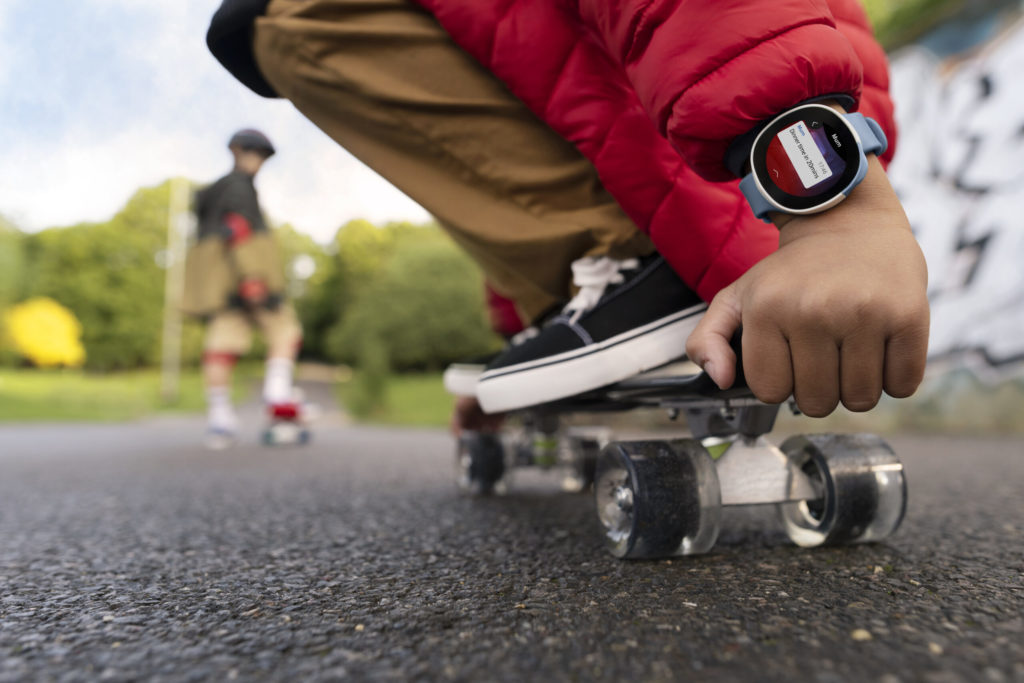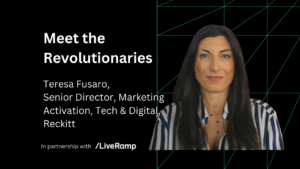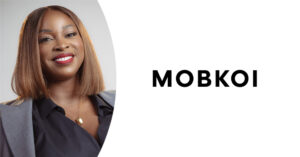In the second part of our exclusive interview with Vodafone’s chief smart tech marketer Pamela Brown, we talk about the importance of responsibility in advertising and how to grow a niche category from within a mass market brand.
Brands have a responsibility to society, customers and their businesses to ensure they communicate and reach consumers ethically, according to Brown.
She believes that ethical advertising and “good marketing” should always be at the heart of a business, but never more so than now. Says Brown, Chief Marketing Officer of Vodafone Smart Tech: “I do think that there is something about COVID that has heightened that.”
For her division that meant delaying the launch of its first branded Vodafone consumer smart tech, the Curve tracker. It had initially been slated to launch across Europe early last year but the timing, coming early in the Coronavirus crisis, would have jarred with the prevailing consumer mood, she says.
The need to understand customer sentiment has heightened
“You need to truly understand consumer sentiment and at that time consumers wanted to hear from companies that had solutions to the problems that they faced in the pandemic. It didn’t feel right to launch then, but as restrictions were easing up and we were allowed out again we actually had a great use case.”
The wider Vodafone business instead pivoted to communications and solutions that would help its customers by supporting Britain’s businesses, key workers, schoolchildren and home workers in order to keep ‘#EveryoneConnected’.
In doing so, it was also able to further its ambition to be a purposeful technology communications company.
The team is now readying the second product from its Designed and Connected by Vodafone range: a smartwatch aimed at children aged six to nine called Neo and which features Disney characters. More products, increased functionality and new tracking use cases will roll out later this year.
“We took a very conscious decision to work with the world’s leading entertainment and content brand, Disney, to create what we believe is a game-changer in the kids’ smartwatch category,” she says.
Designed with real-world customers in mind
Brown believes it has the edge over other alternatives because of the content it provides, as well as all of the child-friendly and safety features it includes. Parents were heavily involved in its development to create a product that is age-appropriate, engaging and useful.
“Kids want mobile phones from a younger and younger age, but there are concerns that come with that as a parent,” she continues, explaining why there is no open access internet or social media functionality. “That is reassuring for the adult that buys this because, they’re some of the things that we worry about – that six to nine-year-olds are not quite old enough to handle the responsibility that comes with being able to surf the internet freely.
“We think about Neo as the first safe step in the smart tech journey – and it comes with great parental controls that give reassurance and connection to their children but also offers the children to be empowered and independent in a safe way.”
This responsibility is echoed in how the watch will be marketed. “I’ve had people say, ‘Oh this is great – you can just sell that to kids’, but we were very clear that this was to be marketed to parents or grandparents, aunties or uncles – adults. Therefore we buy our media that way, and while we’re working with influencers they are those that appeal to those parents. These influencers may or may not have children, but they are definitely adults.”
Creating niche appeal within a mass-market brand
Data is a key consideration in the marketing of the Designed and Connected range, with Vodafone having access to a database of existing customers: it has some 50 million mobile customers across its four key European markets, plus broadband and TV customers.
Yet it will also be marketed to non-Vodafone customers and across digital platforms and in-store (when allowed) experiences. Television and out of home activity is likely to feature later this year.
The team has also transformed how Vodafone has traditionally viewed its customer in order to reach niche audiences who are attracted to smart tech solutions.
“Vodafone is such a mass market company selling mobile phones and tablets, so the way we segment our customers in the main business is very much demographically,” she says. “It’s very different when it comes to smart tech, because we’re working with this bell curve of innovators and early adopters.
“How do we reach those early adopters to help explode this into a category that can be mass market and that hopefully we will be synonymous with – I’m not going to hide our ambition here. To do that we need more than demographic data, it’s more about behaviours and attitudes.”
Its persona model differentiates the market using needs, attitudes and device usage, informed by data that covers everything from considerations around the cost of new tech through to perceptions around being a good parent and friend.
Five smart tech personas were created, having conducted pan-European research with 5,000 customers, with the top two targets for the team being ‘gadget geeks’ who believe that smart tech is essential to efficient living and ‘smart stylers’ who buy tech products because of what it says about them rather than what it does.
In the end, though, it all comes back to the customers, treating them with respect and responsibility and delivering products and services with real purpose.
“If you don’t build products that enhance consumers’ lives in some shape or form, if it doesn’t bring a benefit, then what’s the point?” she says. “And of course, we do have a responsibility to society, to our customers and ourselves to ensure that we communicate and reach consumers in an ethical way.”
Read part one of this interview here.









